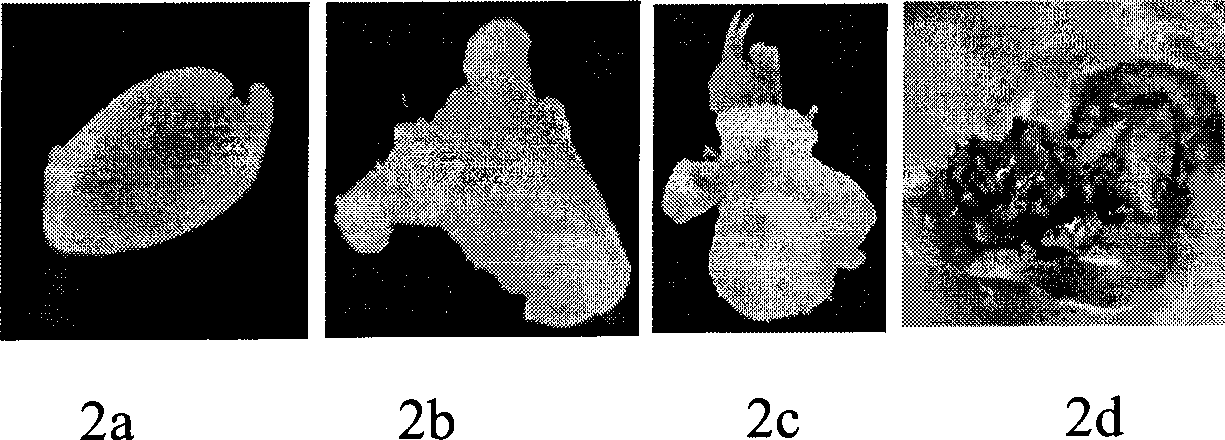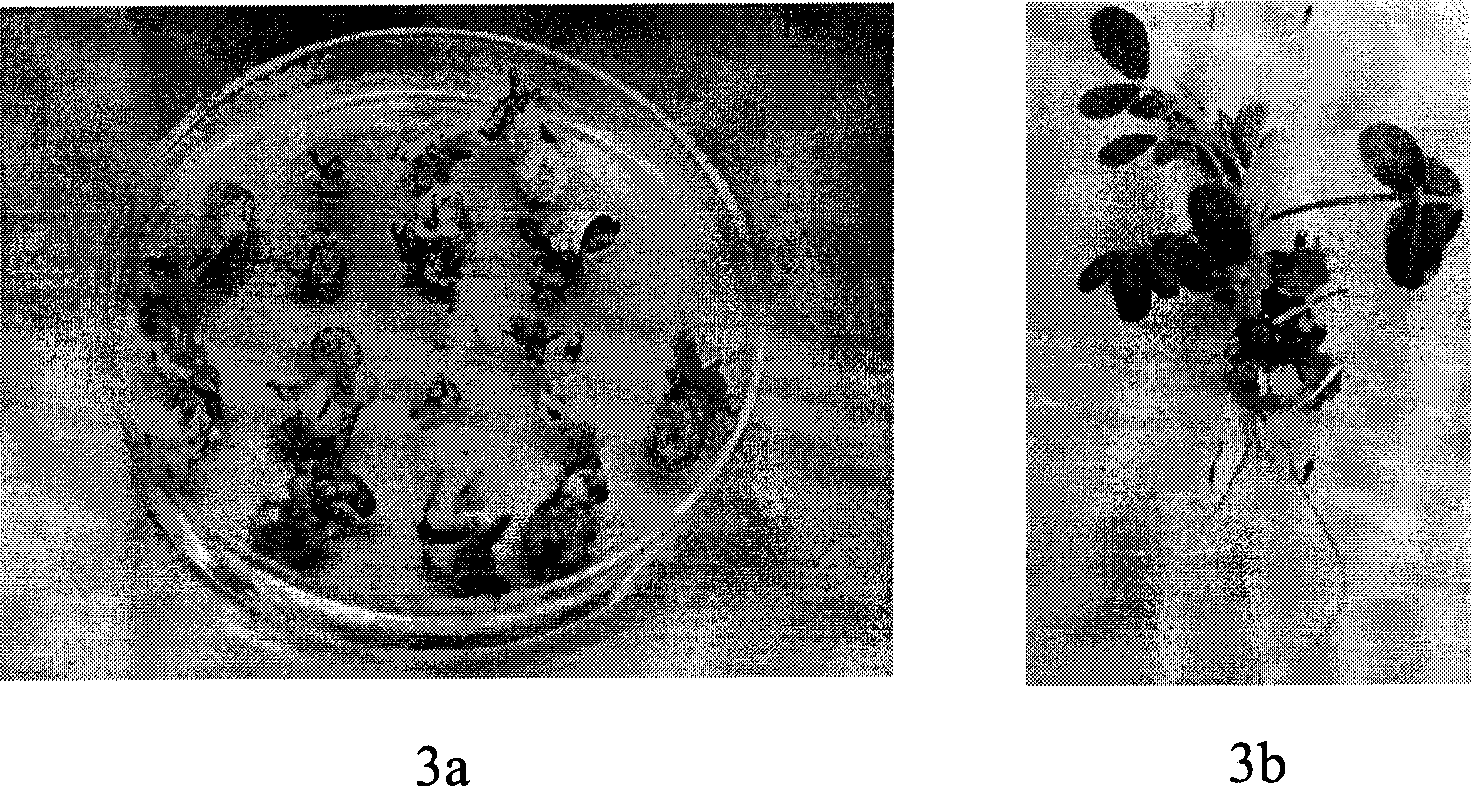Agrobacterium-mediated genetic transformation method with peanut seed domant bud hypocotyl as explant
A genetic transformation method, Agrobacterium-mediated technology, applied in the transformation field of dormant hypocotyl explants, can solve the problems of long regeneration cycle, low transformation and regeneration rate, unstable transformation effect, etc., and achieve high regeneration rate, The effect of shortening the conversion cycle and stabilizing the effect
- Summary
- Abstract
- Description
- Claims
- Application Information
AI Technical Summary
Problems solved by technology
Method used
Image
Examples
Embodiment 1
[0036] Example 1: The Agrobacterium-mediated genetic transformation method using dormant hypocotyls of mature peanut seeds as explants is used for the transformation of AhPR10 gene
[0037](1) Select mature and plump peanut seeds, and in the aseptic environment of the ultra-clean workbench, sterilize the surface of the peanut seeds with 0.1% (W / V) mercuric chloride solution for 10 minutes, and then wash them with sterile water for 3 times. After soaking in warm water at 50°C for 3 hours, remove the seed coat, cut the seeds along the gap between the cotyledons with a sterile scalpel, peel off the complete embryo from the cotyledons with a scalpel, cut off the radicle and bud primordium, and keep the remaining The dormant hypocotyl part of mature peanut seeds was used as the dormant hypocotyl explant to be transformed, and was pre-cultured on a pre-medium (solid MS+3 mg / L 6-benzylaminopurine) for 0.5 days. Such as figure 1 Shown is the preparation diagram of dormant hypocotyl e...
Embodiment 2
[0045] Example 2: The method of Agrobacterium-mediated genetic transformation of dormant embryonic axes of mature peanut seeds as explants is used for the transformation of LjCYC gene in Lotus japonicus
[0046] (1) Select mature and plump peanut seeds, and in the aseptic environment of the superfloating workbench, sterilize the surface of the peanut seeds with 0.1% (W / V) mercuric chloride solution for 10 minutes, and then wash them with sterile water for 3 times. After soaking in warm water at 50°C for 3 hours, remove the seed coat, cut the seeds along the gap between the cotyledons with a sterile scalpel, peel off the complete embryo from the cotyledons with a scalpel, cut off the radicle and bud primordium, and keep the remaining The dormant hypocotyl part of mature peanut seeds was used as the dormant hypocotyl explant to be transformed, and was pre-cultured on a pre-medium (solid MS+3 mg / L 6-benzylaminopurine) for 1 day.
Embodiment 3
[0054] Example 3: The Agrobacterium-mediated genetic transformation method using dormant hypocotyls of mature peanut seeds as explants is used for the transformation of soybean GmFAD3C gene
[0055] (1) Select mature and plump peanut seeds, and in the aseptic environment of the superfloating workbench, sterilize the surface of the peanut seeds with 0.1% (W / V) mercuric chloride solution for 10 minutes, and then wash them with sterile water for 3 times. After soaking in warm water at 50°C for 3 hours, remove the seed coat, cut the seeds along the gap between the cotyledons with a sterile scalpel, peel off the complete embryo from the cotyledons with a scalpel, cut off the radicle and bud primordium, and keep the remaining The dormant hypocotyl part of mature peanut seeds is used as the dormant hypocotyl explant to be transformed, and is pre-cultured on a pre-medium (solid MS+3 mg / L 6-benzylaminopurine) for 0.5-1 day.
[0056] (2) Using the soybean GmFAD3C gene as the transgene, ...
PUM
 Login to View More
Login to View More Abstract
Description
Claims
Application Information
 Login to View More
Login to View More - R&D
- Intellectual Property
- Life Sciences
- Materials
- Tech Scout
- Unparalleled Data Quality
- Higher Quality Content
- 60% Fewer Hallucinations
Browse by: Latest US Patents, China's latest patents, Technical Efficacy Thesaurus, Application Domain, Technology Topic, Popular Technical Reports.
© 2025 PatSnap. All rights reserved.Legal|Privacy policy|Modern Slavery Act Transparency Statement|Sitemap|About US| Contact US: help@patsnap.com



